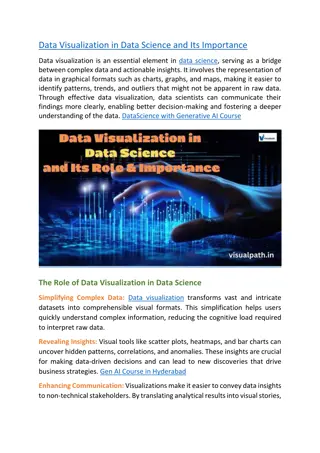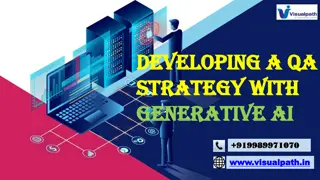SKED: Sketch-Guided 3D Editing Technique for Neural Generative Art
Geometric reasoning and semantic knowledge exploitation are key components of SKED, a sketch-guided 3D editing technique aimed at enhancing user control in neural generative art. By analyzing input sketches and leveraging geometric principles, SKED allows users to refine and manipulate 3D shapes based on text prompts. The method involves rendering base models, applying editing algorithms, and incorporating preservation and silhouette loss to maintain object geometry and color fidelity throughout the editing process.
Download Presentation

Please find below an Image/Link to download the presentation.
The content on the website is provided AS IS for your information and personal use only. It may not be sold, licensed, or shared on other websites without obtaining consent from the author.If you encounter any issues during the download, it is possible that the publisher has removed the file from their server.
You are allowed to download the files provided on this website for personal or commercial use, subject to the condition that they are used lawfully. All files are the property of their respective owners.
The content on the website is provided AS IS for your information and personal use only. It may not be sold, licensed, or shared on other websites without obtaining consent from the author.
E N D
Presentation Transcript
SKED: Sketch-guided Text-based 3D Editing Aryan Mikaeili1Or Perel2Mehdi Safaee1Daniel Cohen-Or3Ali Mahdavi-Amiri1 1Simon Fraser University 2NVIDIA 3Tel Aviv University
Introduction Current neural generative art takes away much of the control from humans Aim to design neural networks that complement users' skills, rather than dominating the generative process. 2D Text-to-image : users lack the necessary granularity to produce their exact desired outcomes. Sketch-guided editing : By incorporating user-guided sketches into text-to-image models 3D Text-to-3D : DreamFusion and Magic3D, which build on the capabilities of text-to-image models, may be considered as an alternative. Challenges Need for consistent sketches across multiple views, The requirement for fine-grained control in editing 3D shapes, The complexity of aligning user input with the semantics of text prompts.
Introduction SKED ( SKetch-guided 3D EDiting technique ) Geometric Reasoning : analyzing the input sketches and leveraging geometric principles, this subtask helps determine the general area of the edit. Semantic Knowledge Exploitation : utilizes the rich semantic knowledge embedded in the generative model to add and refine geometric and texture details through fine-grained operations.
Method Render base NeRF model F_o from at least two views and sketch over them(C_i) Editing algorithm : Input : sketches preprocessed to masks (Mi ) and a text prompt. Render a random view and apply the Score Distillation Loss to semantically align with the text prompt. Lpres : preserve the base NeRF by constraining Fe s density and color output to be similar to Fo away from the sketch regions. Lsil : ensures that the object mask occupies the sketch regions.
Preservation Loss (Lpres) geometry and color of the base object are preserved through the editing process. determines whether pi should be changed by calculating the distance from the point to the sketch masks the distance of a 3D point to multiview 2D sketch
Silhouette Loss: the new density mass added to Fe should occupy the regions specified by the sketches. rendering the object masks of all sketch views, then maximize the values of the object masks in the sketched regions by minimizing the following loss
Optimization Score Distillation Loss : semantically align the rendered image with the text prompt. Preservation Loss : maintain the geometry and color of the base object throughout the editing process Silhouette Loss : ensure that the new density mass added to the neural field occupies the regions specified by the sketches. Sparsity Loss: enforce sparsity of the object by minimizing the entropy of the object masks in each view.























